


With an ever-increasing number of health apps on the market and newly introduced privacy laws, tech startups need to constantly re-evaluate the way they collect and store user data. If you're starting the process of healthcare app development, you must be familiar with the term “HIPAA compliance.”At Purrweb, we built several successful HIPAA-friendly apps for our clients. Based on our experience, we created a guide to explain what HIPAA standards are for and answer the most asked questions about how to build a HIPAA-compliant app from scratch.
Bonus in the end: find a checklist for a HIPAA-compliant app. Let’s go!
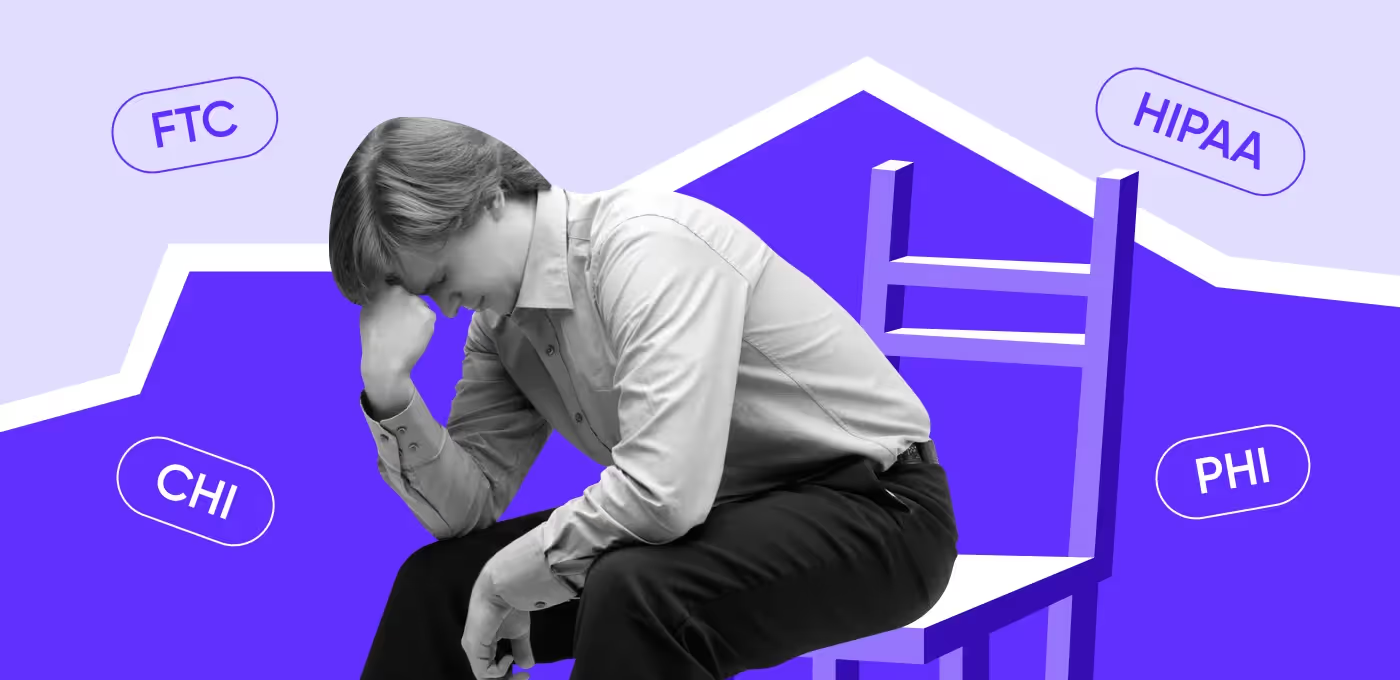
HIPAA stands for Health Insurance Portability and Accountability Act. It was passed by the U.S. Congress in 1996 to protect the medical records and the personal health information of patients.
HIPAA is a federal law in America, which means it's applied in all 50 states. Regardless of where your company is registered or what state you operate in, you must consider both federal and local regulations.
The main goal of HIPAA is to make sure the details about one’s health are confidential. Therefore, HIPAA apply to PHI — all information that can help identify the patient, such as a name, date of birth, SSN number, and phone.
HIPAA–compliant mobile apps promise users that their sensitive data is under reliable protection. HIPAA-covered entities must have a business associate agreement with every partner to maintain PHI data security and be HIPAA-compliant.
All you need to know about HIPAA and compliant software development in this article. But if we had to summarize it in 2 quick points, that’s what it would be:
It might sound obvious, but HIPAA-compliant software development includes a lot of new terms and definitions. Even if you come from a medical background or have other projects in the healthcare industry, some of these expressions might be unfamiliar. Here are the 5 most HIPAA important terms + definitions.
PHI includes data that can identify the patient. So, long story short, anything unique to a patient — name, personal number, SSN, and other pieces of information. We’ll dive deeper into this, later in this article.
This term might need extra explanation too — covered entities are defined as:
In short, covered entities include hospitals, doctors, dentists, chiropractors, insurance companies, among others. The HIPAA privacy rule applies to every covered entity.
For startup and product owners, it’s important to understand that most health apps are not covered entities under the HIPAA security rule. But they still have to comply.
HIPAA privacy rules are important, not just because the law says so. They're important because they protect parties, and benefit both patients and hospitals. Let’s look at it closer.
For patients, HIPAA is a synonym of trust. If a doctor is compliant with HIPAA, it guarantees data integrity and security of personal data.
<div class="post_divider"></div>
Psychotherapy is a sensitive subject. We were lucky to work with the client, who was very selective when it came to developing a HIPAA-compliant app.
For My Therapy Assistant, a service for psychotherapists and their clients, our team selected a reliable tech stack and encryption. It guarantees that data protection meets the requirements of both the American HIPAA and the European GDPR.
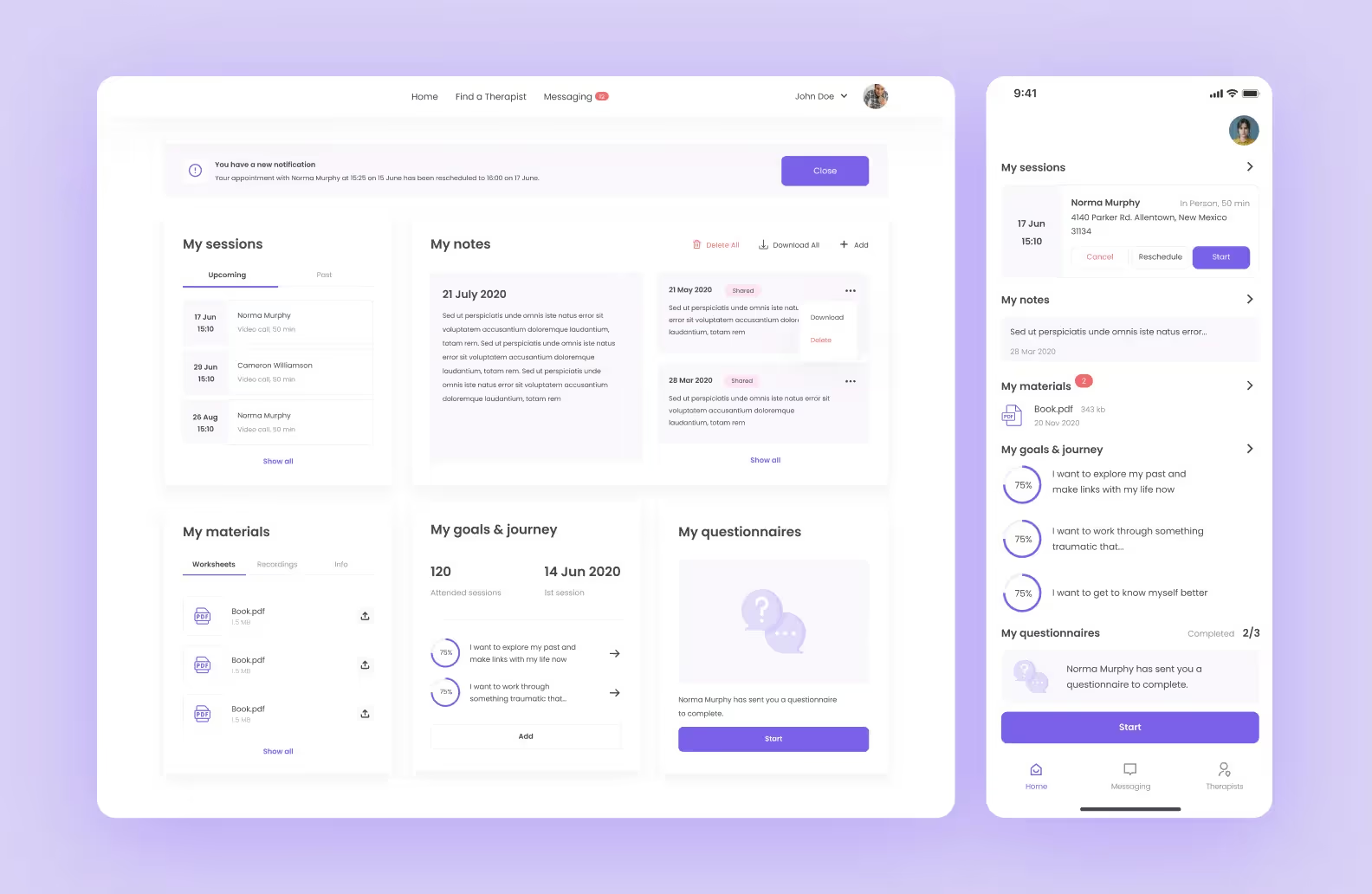
With this app, patients can:
– book appointments,
– monitor the sessions,
– make notes,
– track therapy goal,
– keep the materials in one place.
To avoid an overloaded interface, we chose a neutral white background with a purple accent color.
<div class="post_divider"></div>
Standards like HIPAA rules help healthcare workers standardize their services, data integrity, improve efficiency of the processes, eliminate fraud, and prevent risks of data breaches. On top of that, HIPAA develops trust between a doctor and a patient. Would you rather go to a clinic with a HIPAA certificate, or to a place that has no guarantees your data will be safe?
Fines for noncompliance can destroy early-stage startups. If you ignore HIPAA regulations, you could be fined anywhere from $100 to $1,500,000 per violation, with a maximum fine of $2,134,831 per year. Some violations can even result in jail time.
If you don’t want to have trouble with the law — and no one does — it is crucial to know about HIPAA requirements.
There are 3 types of requirements for developing a HIPAA-compliant app: administrative, physical, and technical safeguards. All of them regulate access control and data sharing. Let’s review the HIPAA requirements in detail and discuss possible safety measures for the app.
These refer to internal regulations that can be implemented by startup owners, hospitals, and healthcare providers during app development to ensure data privacy and security. For example, regular employee training and risk assessments. Administrative security measures can include:
Physical safeguards refer to real-world policies that protect physical access to buildings, workstations, computer servers, and networks. Their main goal is to monitor who accesses the data in a HIPAA–compliant app to prevent potential violations and unauthorized users. Such security measures for HIPAA compliance software development include:
The main problem for HIPAA violation is device theft — when your phone gets stolen, information on it falls into the hands of scammers. Technical requirements ensure that personal information in the HIPAA–compliant software is secured on the backend and will remain confidential even if someone gets a hold of your device.
Technical safeguards in the HIPAA–compliant app development help to reduce data misuse and identity thefts or fraud. They include:
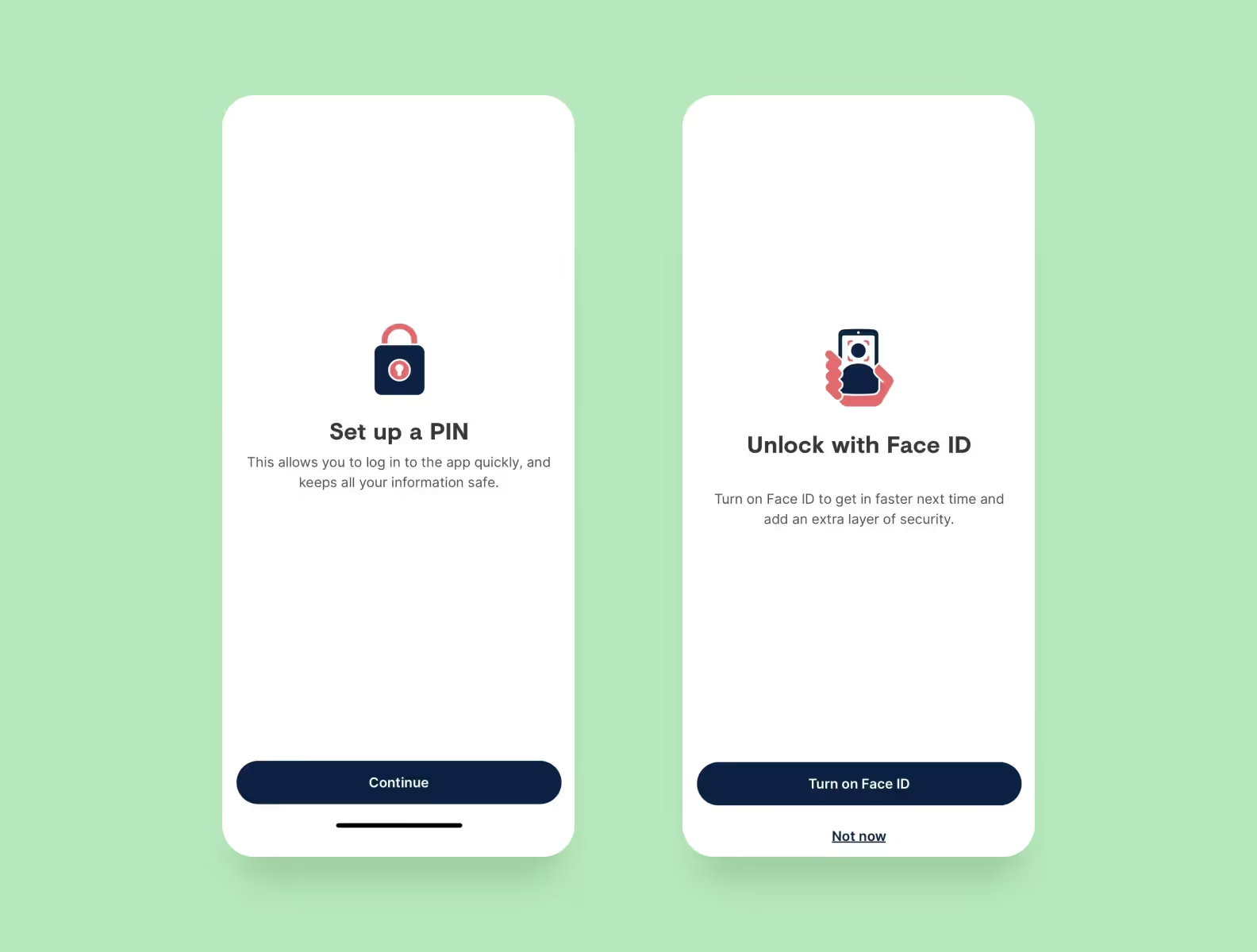
Since 2003, there have been more than 370,000 privacy violation complaints. This is not a small number. If you fail to secure HIPAA privacy for consumer health information, it will have major consequences.
First, the law requires you to notify users of the breach, specify what information leaked, and explain potential risks. Just imagine the bad PR that can come out of this and to what extent it can damage your business.
Secondly, the HIPAA application owner can be liable for fines and penalties that can put a burden on financial management, especially for startups at early stages.
To prevent this, proper planning and knowledge of HIPAA compliance are required.
The law references PHI. Data that can identify a particular user is protected under HIPAA requirements. It includes the following.
💁♂️ Names. Full, first or last name, and initials would be protected by HIPAA regulations if it's accompanied by consumer health information.
🌎 Geographical identifiers. Everything smaller than a state, for example, your city, county or neighborhood. But there's one exception: the first three digits of a zip code. So, the user’s address or place of birth would be covered.
📅 Dates. The dates, other than the year, are directly related to a user. For example, date of birth, as well as death date, and admission or discharge date.
📞 Phone numbers. Have you ever gotten a spam call and wondered where they got your number? Definitely not from your healthcare provider, because it would be a serious HIPAA violation. Also, for those of you that remember this throwback, a fax number is considered to be a part of the PHI–covered entities too.
💌 Email addresses. It's self-explanatory — email can also identify a patient, so it's protected under HIPAA.
🔒 Social Security number. Breached Social Security numbers can lead to identity theft and other serious consequences.
🩺 Medical record numbers. The number consists of six digits and appears on most healthcare documents: bills, visit summaries, or referrals. It helps doctors access patients’ electronic records.
🏥 Health insurance information. Name of the provider, patient ID, and group number — all are confidential and should be protected under HIPAA.
😎 Account number. This number is assigned by healthcare organizations during a medical visit and is also subject to HIPAA protection.
👩🏻⚕️Certificate or license numbers. HIPAA protects doctors as well — their educational and professional documents fall under the HIPAA compliance rules.
🚗 Vehicle information. Covered entities include a driver’s license number, license plate number, or the serial number of a car.
🦾 Device identifiers and serial numbers. If a user wears medical devices, for example, insulin pumps or health rate monitors, their serial numbers would be also considered confidential patient data.
🧑🏻💻Web URLs. Any URL that can be associated with patients needs to be protected. Don’t overlook it during HIPAA–compliant app development.
💻 IP addresses. An IP address identifies a device that accesses your mHealth app and, in the wrong hands, it can be traced to someone’s smartphone or laptop.
✋Biometric data. Many healthcare organizations use biometric data scans to link an account to a specific user. Everyone has unique fingerprints, so if a patient adds them to their account, no one else can access the information. Covered entities here include a finger, retinal, voiceprints, and other biometric identifiers.
📸 Photos or videos. This refers to any picture showing the full face of an individual, but also a photo with identifiable PHI — a name, initials, or a patient number.
🕵️♀️Any other identifying details. Other characteristics and unique codes can point out specific individuals and disclose their medical information.
Important note: Demographic data, for example, name, date of birth, or insurance information are only protected when they're used in combination with medical information
Not all healthcare mobile and web solutions must be HIPAA compliant. For example, most yoga, meditation, or any other health app wouldn't fall under the privacy act, because your identifiable information is for personal use. It's not intended to be shared with healthcare workers.
<div class="post_divider"></div>
Our customers approached us with the idea of a Fitness App, an app that connects trainers with their clients. They already had a website but weren't happy with the platform — it was hard to organize workouts and communicate with clients.
In 3 months, we came up with a web platform for coaches and a mobile app for clients.
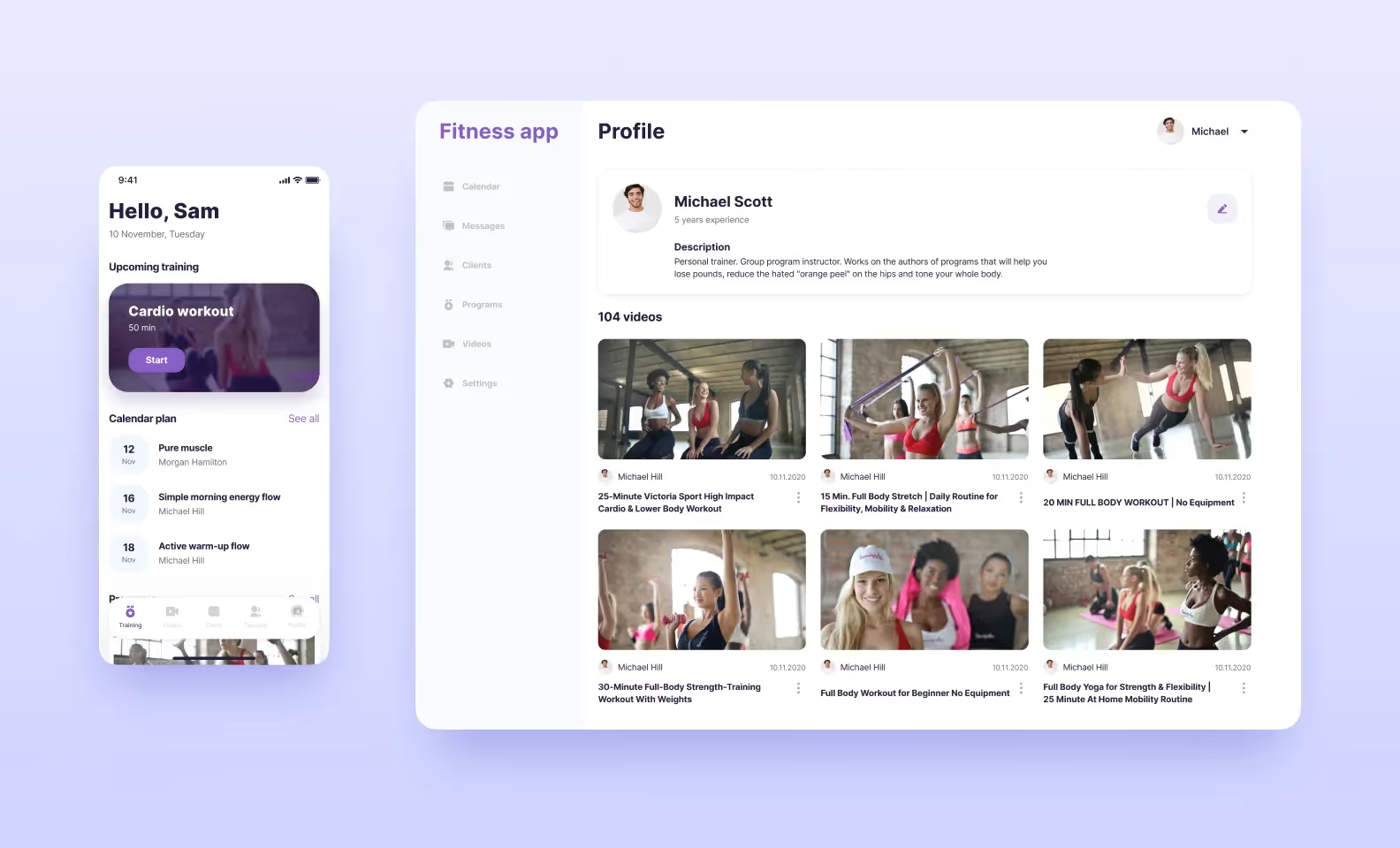
Coaches can see the client’s training schedule, chat with them, and create fitness programs. Meanwhile, clients get a training calendar and access to different programs and exercises.
<div class="post_divider"></div>
The HIPAA Act only applies to platforms that share your medical information with “covered entities” — other parties, for example, doctors, dentists, hospitals, and health insurance companies. They must use HIPAA-compliant software.
To check if the law applies to your startup, you need to answer three questions about your healthcare app:
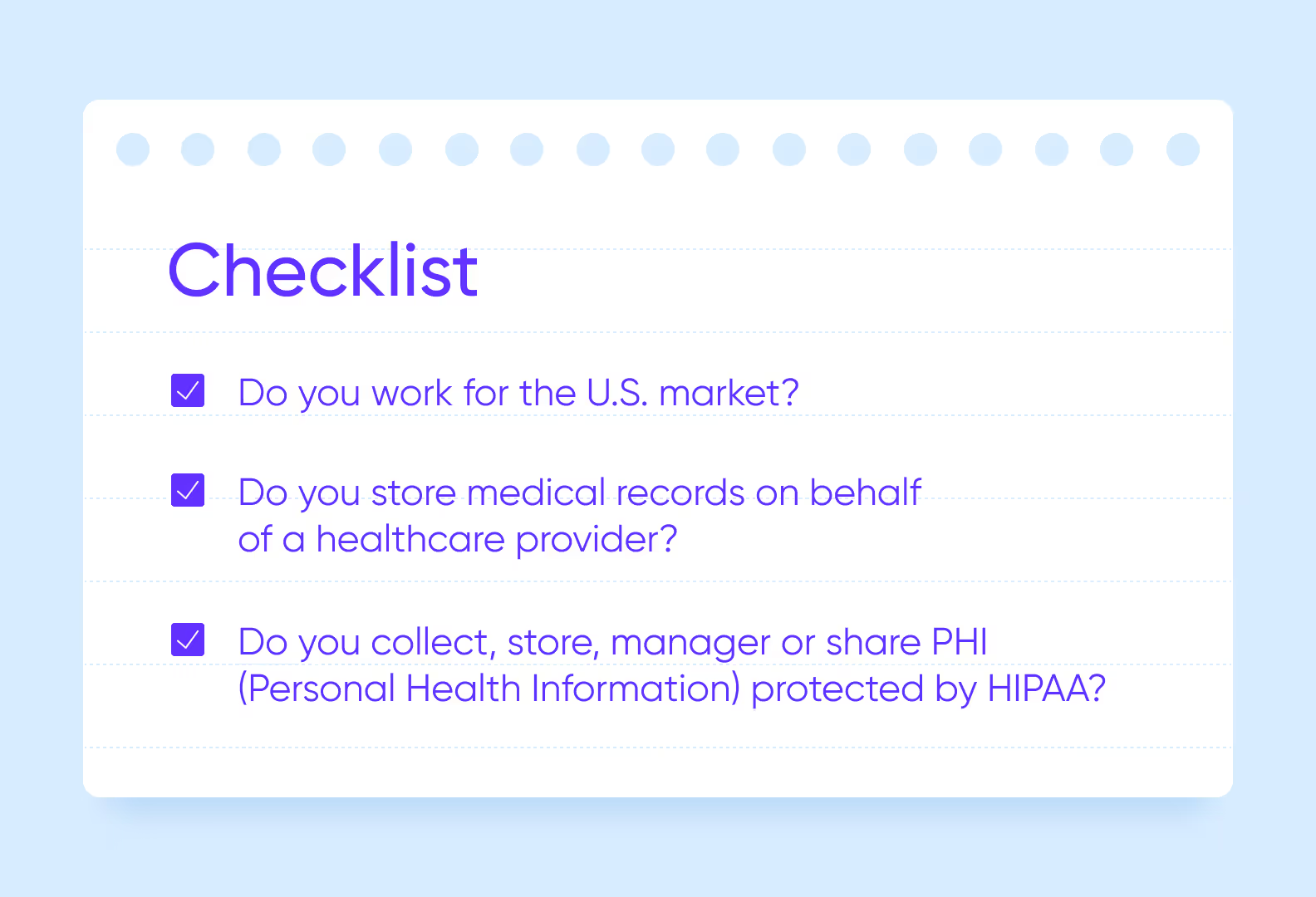
The United States doesn't have national privacy and data protection laws, like GDPR in the European Union. But there are many detailed regulations focused on specific data types. Let’s take a look at some of them that can apply to your mobile app.
The FTC (Federal Trade Commission Act) protects users from “anticompetitive, deceptive, and unfair business practices.” Essentially, it requires you to be honest and upfront with users about the way you manage their information, as well as to notify users when their data is breached.
Some states have their own laws about data privacy. For example, New York introduced the SHIELD Act. It applies to any app that owns the private information of a New York resident. In short, even if you don’t operate in New York, it's likely the SHIELD Act still applies to you if you have at least one user from the city. The act requires mobile apps to adopt certain administrative, technical, and physical safeguards for data protection.
California also has a data privacy law for the residents — the Consumer Privacy Act (CCPA). Under it, users have the right to know what information an app collects, the right to request information to be deleted, as well as the right to opt-out of sharing data.
Important reminder: check data privacy laws in the states you operate in. California, Illinois, Colorado, Utah, Virginia, and Connecticut regulate the sensitive data of their residents.
For startups in the healthcare industry, the knowledge of HIPAA regulation is a must to avoid huge fines and penalties. To ensure that the personal health data of your users is protected and to make your app HIPAA compliant, we recommend these 4 steps.
Here comes the burning question: how does that impact the prices of your product and how much does developing HIPAA-compliant apps usually cost?
Let’s crunch the numbers for a similar HIPAA–compliant project we developed.
🚨 Disclaimer: This is an estimation for HIPAA-compliant app development with our team and we don’t guarantee other companies have the exact costs or timelines.
Overall, building a HIPAA-compliant app will cost you around $55,250 and will take approximately 5 months.
Building HIPAA-compliant apps is a complex process, especially if you’re not familiar with the regulations. So we recommend working with a reliable development partner who has experience creating healthcare applications. It will also be helpful to consult with medical professionals, as they have expertise in the healthcare industry.
Before you begin development, you need to study the regulations and how they apply to medical applications. Find out what is considered a violation and what the penalties may be.
Then, you can check if your idea falls under HIPAA-compliant applications. As we mentioned previously, not all applications with medical data fall under HIPAA regulations. It depends on what information you collect and how you treat it. Verify the requirements before you build a HIPAA-compliant app.
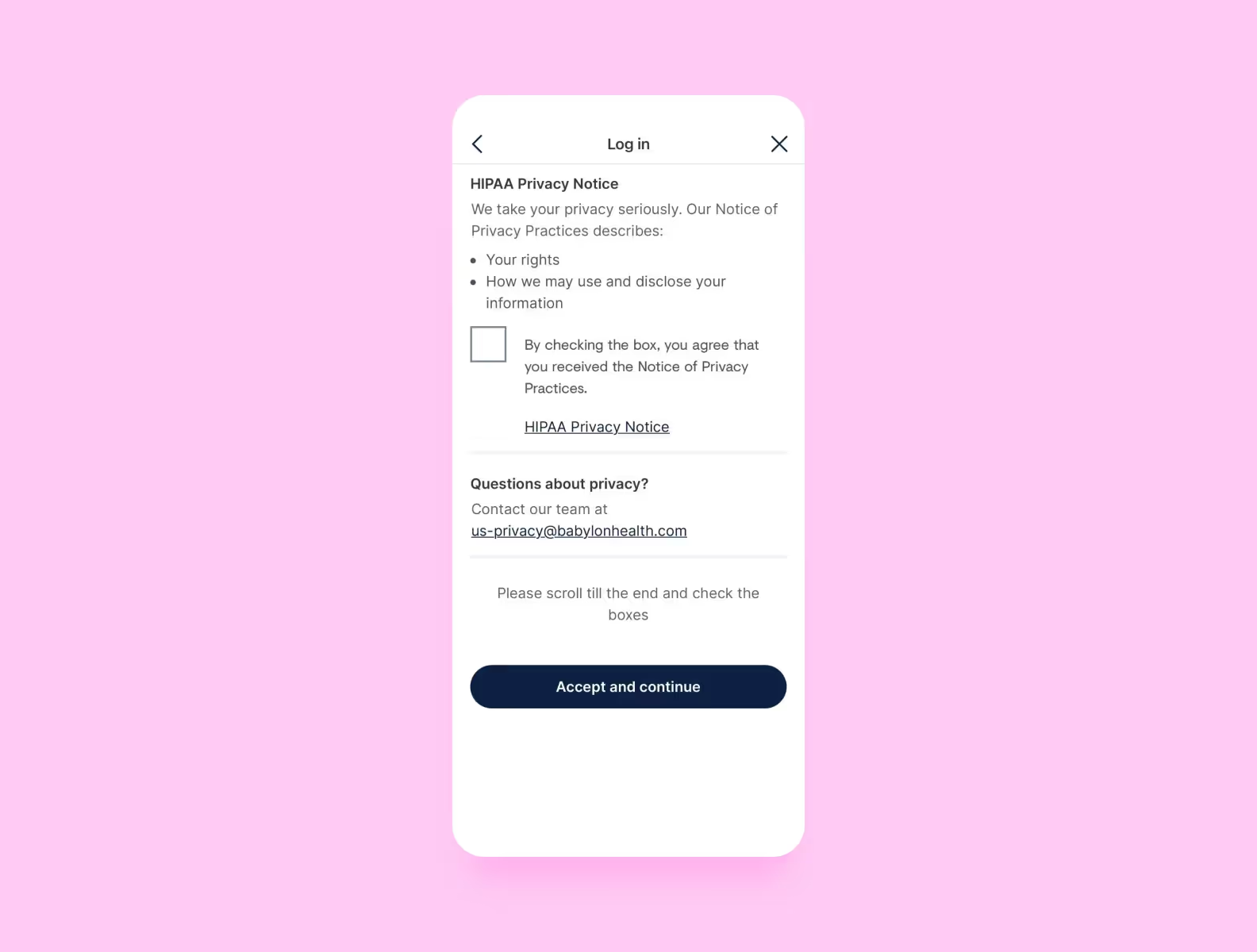
Identify security vulnerabilities in your software. These may include exposure to security breaches and unauthorized access to PHI. The risks should be eliminated before launching the app to avoid losing user trust.
You can implement the following security measures:
To further protect patient data, you can implement role-based access. This feature allows only authorized individuals to access PHI. Roles are defined according to their position in the healthcare organization. Each role has its own set of permissions that determine access to resources in the application.
For example, a doctor may have access to all data, while a nurse may only see specific things that are related to medication administration.
Personnel who will interact with your app must understand how to maintain HIPAA compliance. Conduct regular training on the latest HIPAA regulations, emerging cybersecurity threats, and data protection.
Changes in your application, innovations in technology, and updates to rules, require changes to your compliance strategy. Test your application regularly to ensure it's secure and complies with the latest regulations.
In addition to secure access to PHI, software with HIPAA compliance offers other useful features for patients and healthcare professionals.
Encryption ensures that even if data is accessed by an unauthorized person, it cannot be read or used for malicious purposes. There are two types of encryption: in transit and at rest.
In transit encryption protects data as it travels between devices, servers, or apps. The TLS protocol is the most common choice for this purpose. To ensure that the protocol provides the best possible protection, remember to update it regularly.
Encrypting data at rest ensures that only those who have the key can access medical data. This can be data stored on devices, in databases, or in backups. For strong encryption, you can use AES with keys of sufficient length.
For high security, healthcare apps also use strong user identification. This means that only authorized users can access PHI. Examples of authentication methods are the following:
Every second matters in the healthcare industry. In emergency situations, doctors may need quick access to medical data to help a patient in a timely manner. Healthcare apps must provide this access while maintaining the security and confidentiality of the information.
There is a special HIPAA Breach Notification Rule. When a data breach occurs, the affected individuals must be notified immediately, or no later than 60 days. If there are more than 500 affected individuals, organizations must also notify the Department of Health and Human Services and the media.
To comply with regulatory requirements and avoid penalties, it’s essential to track data breaches. Healthcare apps can assist in identifying the scope of the breach, the information compromised, and the individuals potentially affected. This feature simplifies the process of documenting the incident and helps organizations take steps to mitigate the negative effects.
For startup owners, it's important to understand how to make an app HIPAA-compliant. It's not a one-time thing, but an ongoing process.
HIPAA–compliant application requires commitment, regular maintenance, and support, to make sure your safeguards stay up-to-date and patient data is protected. Any breach of data can cost a lot of money and hurt the reputation of a startup. Therefore, it's better to plan attentively, anticipate challenges, and nip them in the bud.
We put together a checklist that will help you make sure your app has these vital technical safeguards:
✅ Unique username or account number
✅ Emergency access to information
✅ Automatic logout when the user is inactive
✅ Encryption and decryption of confidential data
✅ Automatic check-ups of information systems
✅ ePHI integrity policies
✅ Passcode and two-factor authentication
✅ Transmission data security measures
Leave your email <a class="blog-modal_opener">in the form</a> to have a consultation with our team ➡️